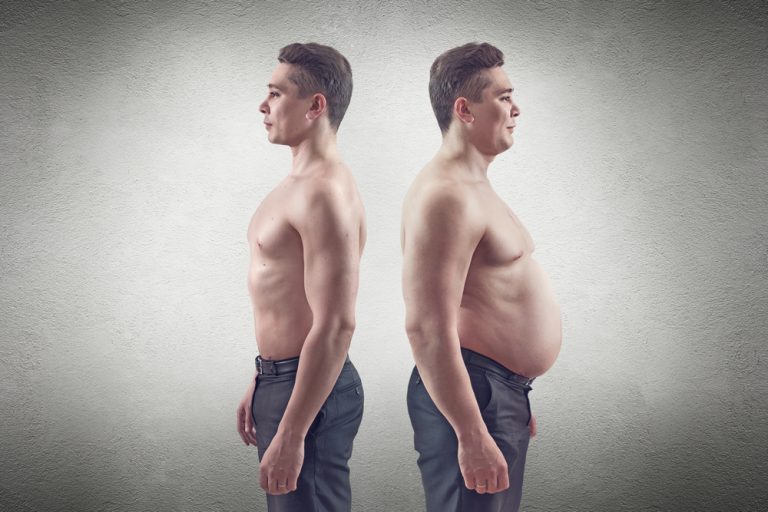We set goals to ‘tone up’ or ‘get lean’, but to avoid looking like a long-distance runner, we need to maintain our muscle mass while losing body fat.
Let's be honest!
Let’s be clear on one thing. To lose body fat, you need to be in a calorie deficit, and your body will be in a catabolic state, i.e. breaking down tissues. While in a catabolic state, your muscles are also at risk of breaking down, which is why drastically cutting calories often results in both fat and muscle loss. To build muscle mass on the other hand, your body needs to be in an anabolic state and calorie surplus.
As the body is either in a catabolic or anabolic state, this means that at any one time you cannot build muscle while losing fat. While flipping between a catabolic and anabolic state on different days of the week is possible, in reality this won’t achieve the best results and explains why most body builders spend the majority of the year working on sculpting their muscles and only a couple of months or so losing body fat.
To maximise on fat loss while maintaining your existing muscle follow these 5 top tips:
Eat enough protein, but not too much
While your body is in a catabolic state, it will find energy from your own body stores by breaking down fat and also protein in muscle tissues. Ensuring that you have a regular supply of protein in your diet will help to minimise the protein broken down from muscles, therefore maintaining your muscle mass.

Too much protein on the other hand will simply be stored as body fat, and protein is actually quite insulinogenic, causing spikes in insulin levels, the fat storing hormone.
1g of protein per kg of body weight is adequate for most active individuals (e.g. 70g of protein for a person weighing 70kg). If weight training regularly though, up to 1.5g per kg body weight may be more suitable.
Go easy on the carbs
There’s no need to follow a strict low carbohydrate diet to lose body fat, although for some individuals it can help to shed fat fast. Keeping carbs reasonably low around 100g per day and choosing natural unprocessed foods will help to reduce insulin levels and therefore lower appetite.
Consider fasting
Whether you choose to fast for a couple of days each week or fast for 16 hours each day, the process of avoiding food for extended periods of time promotes an optimal hormone balance for fat loss and can make a calorie deficit easier to obtain too.
Many people think that fasting will induce the ‘starvation mode’ which in reality is only something which occurs when your body fat is extremely low. For the majority of us, we don’t need to worry about this, and fasting actually increases levels of growth hormones helping to preserve muscle mass.
Lift heavy weights
If you concentrate your efforts on anabolic workouts (heavy weight training) you are likely to stimulate muscle tissues, promoting muscle maintenance even in a calorie deficit.
Don’t overdo it on catabolic type exercises such as long distance running or cycling. These forms of exercise will keep you fit, but in a catabolic state, muscle fibres may be broken down.

Prioritise recovery & sleep
Rest days are as important as work out days when it comes to muscle growth, allowing for damaged muscle fibres to form larger muscles. Aim to rest muscles every other day. This could relate to exercising every other day or concentrating on different muscle groups during a workout.
Getting enough sleep is also key for preventing muscle loss. If sleep deprived, hormones such as cortisol can rise, inducing a catabolic state and therefore risking muscle break down.






